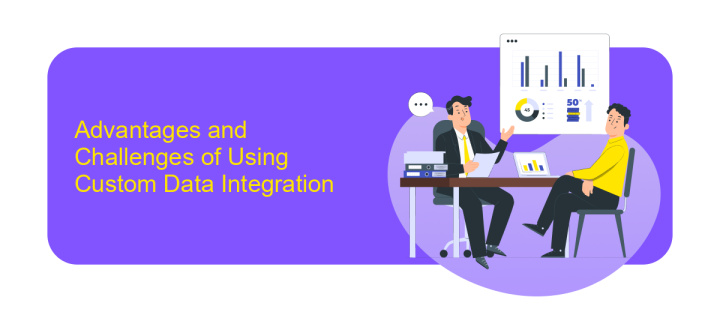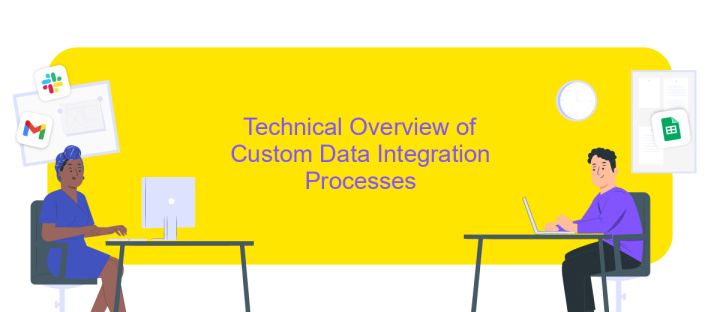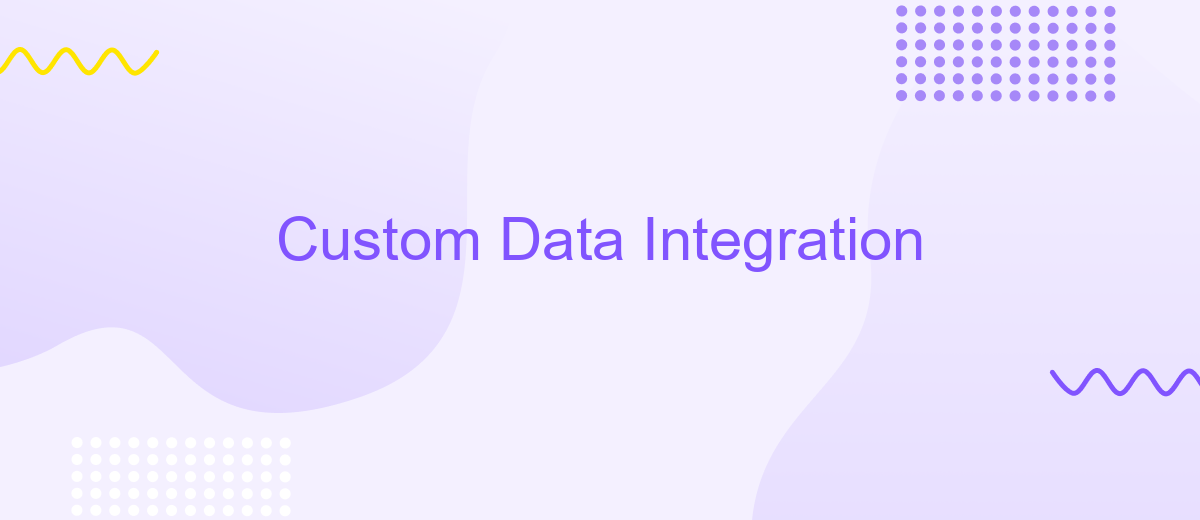Custom Data Integration
In today's data-driven world, seamless integration of diverse data sources is crucial for businesses aiming to stay competitive. Custom data integration enables organizations to tailor data workflows to their specific needs, ensuring accurate, real-time insights. This article explores the benefits, challenges, and best practices of implementing custom data integration solutions to enhance operational efficiency and decision-making.
Introduction to Custom Data Integration
Custom Data Integration is a critical process for businesses aiming to unify disparate data sources into a cohesive and actionable dataset. This approach allows organizations to tailor their data integration strategies to meet specific needs, ensuring that the data is relevant, accurate, and readily accessible for analysis and decision-making.
- Enhanced data accuracy and consistency
- Improved decision-making capabilities
- Seamless integration with existing systems
- Scalability to accommodate growing data volumes
- Flexibility to adapt to changing business requirements
By leveraging custom data integration, companies can overcome the limitations of off-the-shelf solutions and create a robust data infrastructure that supports their unique operational and strategic goals. This tailored approach not only optimizes data workflows but also enhances overall business efficiency and competitiveness in the market.
Advantages and Challenges of Using Custom Data Integration

Custom Data Integration offers numerous advantages, including tailored solutions that meet specific business needs and the ability to integrate disparate systems seamlessly. This flexibility allows organizations to optimize their workflows and enhance data accuracy. For instance, services like ApiX-Drive facilitate the integration process by providing user-friendly tools that connect various applications without requiring extensive coding knowledge. As a result, businesses can achieve real-time data synchronization, leading to more informed decision-making and improved operational efficiency.
However, custom data integration also presents several challenges. One significant issue is the complexity involved in setting up and maintaining these integrations, which often requires specialized technical expertise. Additionally, ensuring data security and compliance with regulations can be demanding, particularly when dealing with sensitive information. Another challenge is the potential for higher costs associated with developing and sustaining custom solutions. Despite these hurdles, leveraging platforms like ApiX-Drive can mitigate some of these challenges by offering pre-built connectors and robust support, thereby simplifying the integration process while ensuring reliability and security.
Technical Overview of Custom Data Integration Processes

Custom data integration processes involve the seamless merging of data from multiple sources into a unified system, ensuring consistency, accuracy, and accessibility. This approach is essential for organizations aiming to leverage diverse datasets to drive decision-making and operational efficiency. The technical aspects of these processes require careful planning, robust tools, and stringent data governance policies.
- Data Extraction: Identify and extract data from various sources such as databases, APIs, and flat files using ETL (Extract, Transform, Load) tools.
- Data Transformation: Cleanse, normalize, and transform the extracted data to ensure compatibility and consistency across different datasets.
- Data Loading: Load the transformed data into a target system such as a data warehouse or data lake, ensuring it is readily accessible for analysis and reporting.
- Data Integration: Integrate the loaded data with existing datasets, maintaining data integrity and enabling comprehensive analytics.
- Data Governance: Implement data governance policies to manage data quality, security, and compliance throughout the integration process.
Effective custom data integration processes are critical for organizations seeking to harness the full potential of their data assets. By following a structured approach and leveraging advanced tools, businesses can achieve a cohesive data ecosystem that supports informed decision-making and drives growth.
Case Studies and Best Practices for Custom Data Integration

Custom data integration has become a cornerstone for businesses aiming to unify disparate data sources into a cohesive system. One notable case study involves a retail company that successfully integrated its online and offline sales data, leading to a 20% increase in sales through more accurate demand forecasting. Another example is a healthcare provider that merged patient records from various departments, significantly improving patient care and operational efficiency.
Best practices for custom data integration include thorough planning, selecting the right tools, and ensuring data quality. It's essential to map out data sources and define clear objectives before starting the integration process. Choosing the right integration platform can simplify the process and reduce errors.
- Thoroughly plan and map out data sources
- Select the appropriate integration tools and platforms
- Ensure high data quality and consistency
- Regularly monitor and update the integration system
By following these best practices, businesses can effectively integrate their data, leading to improved decision-making and operational efficiency. Real-world case studies highlight the transformative impact that well-executed data integration projects can have on an organization.


Future Trends and Outlook for Custom Data Integration
The future of custom data integration is set to be shaped by the increasing adoption of AI and machine learning technologies. These advancements will facilitate more intelligent data mapping and transformation, allowing for real-time analytics and decision-making. As businesses continue to generate vast amounts of data, the need for seamless and efficient integration solutions will grow. Tools like ApiX-Drive, which offer user-friendly interfaces and automated workflows, will become indispensable for companies aiming to streamline their data processes without extensive coding knowledge.
Moreover, the trend towards cloud-based solutions will further enhance the scalability and flexibility of data integration efforts. APIs will play a crucial role in this evolution, enabling disparate systems to communicate effortlessly. Security and compliance will also be at the forefront, with robust encryption and governance mechanisms becoming standard features. As organizations strive for greater agility and innovation, custom data integration will be pivotal in unlocking new opportunities and driving competitive advantage.
FAQ
What is custom data integration?
Why is custom data integration important for businesses?
What are the common challenges faced during custom data integration?
How can businesses ensure successful custom data integration?
Can small businesses benefit from custom data integration?
Strive to take your business to the next level, achieve your goals faster and more efficiently? Apix-Drive is your reliable assistant for these tasks. An online service and application connector will help you automate key business processes and get rid of the routine. You and your employees will free up time for important core tasks. Try Apix-Drive features for free to see the effectiveness of the online connector for yourself.

